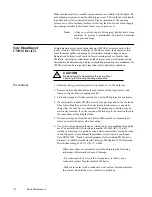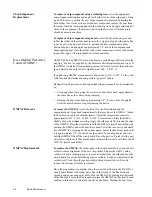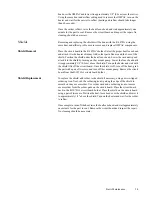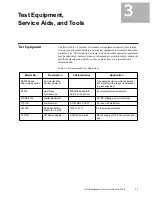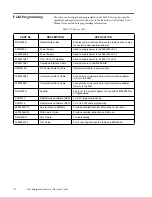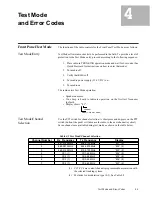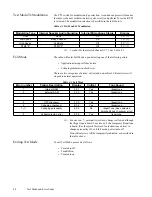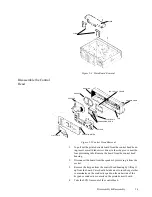
2-2
Basic Maintenance
Make sure that controls or tunable components are not soaked with the liquid. Do
not use high-pressure air to hasten the drying process. This could cause the liquid
to puddle and collect in unwanted places. Upon completion of the cleaning
process, use a soft, absorbent, lint-free cloth to dry the area. Do not brush or apply
any isopropyl alcohol to the frame, front cover, or back cover.
Note:
Always use a fresh supply of isopropyl alcohol and a clean
container to prevent contamination by dissolved material
from previous usage.
Safe Handling of
CMOS Devices
Complementary metal-oxide semiconductor (CMOS) devices are used in this
family of radios. While the attributes of CMOS are many, their characteristics
make them susceptible to damage by electrostatic or high voltage charges.
Damage can be latent, resulting in failures occurring weeks or months later.
Therefore, special precautions must be taken to prevent device damage during
disassembly, troubleshooting, and repair. Handling precautions are mandatory for
CMOS circuits and are especially important in low humidity conditions.
Precautions
1. Eliminate static generators (plastics, stryofoam, etc. in the work area.
2. Remove nylon or double-knit polyester jackets, roll up long sleeves, and
remove or tie back loose hanging neckties.
3. Store and transport all static-sensitive devices in ESD-protective containers.
4. If at all possible, handle CMOS devices by the package and not by the leads.
Prior to touching the unit, touch an electrical ground to remove any static
charge that you may have accumulated. The package and substrate may be
electrically common. If so, the reaction of a discharge to the case would cause
the same dame as touching the leads.
5. Disconnect all power from the unit before ESD-sensitive components are
removed or inserted unless otherwise noted.
6. Use a static safeguarded workstation, which can be accomplished through the
use of an anti-static kit (Motorola part number 0180386A82). This kit
includes a writ strap, two ground cords, a static-control table mat and a static-
control floor mat. For additional information, refer to Service and Repair
Note SRN F1052, “Static Control Equipment for Servicing ESD Sensitive
Products”, available form Motorola Literature Distribution 2290 Hammond
Drive Schaumburg, IL 60173 (708) 576-2826.
When these items are not readily available, observing the following
techniques will minimize chance of damage.
- If a static-sensitive device is to be temporarily set down, use a
conductive surface for placement of the device.
- Make skin contact with a conductive work surface first and maintain
this contact when the device is set down or picked up.
CAUTION
Do not attempt to disassemble the radio without
observing the following handling precautions.
!















